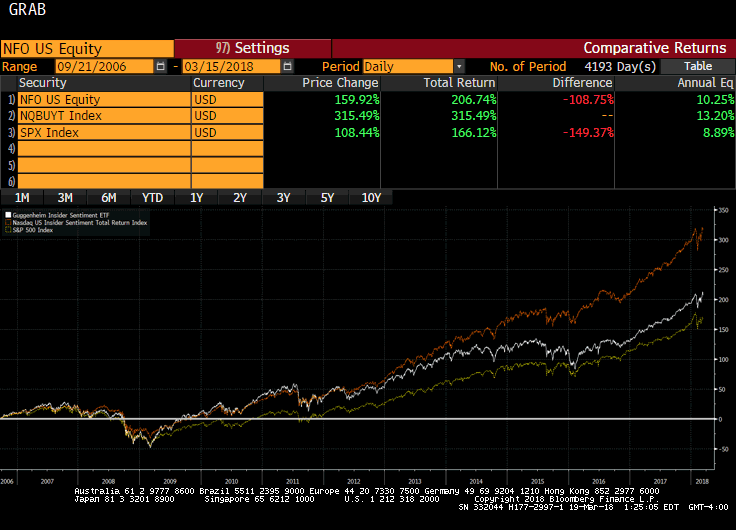It goes without saying that listed company insiders know more about what is going on within a company and what its near-term earnings results are likely to be than even most professional outside analysts, which is why insider trading is heavily regulated in many jurisdictions. Most regulations don’t outright forbid insiders from trading their company’s stock, but often will require that insiders not trader on material non-public information, not trade during blackout periods before financial results announcements are made public, and importantly to disclose their trades in a timely manner. Investors can use this public information on insider buying to beat the market by buying what informed insiders are buying.
Nasdaq.com has one of the best websites for following insider activity (for example, here is the insider trading activity on Apple), which I have found so useful to have one click away I put it on the bottom of company information pages on GFMPartners.com. So far, I have yet to find information as good on the insider purchases of stocks listed on non-US exchanges.
There are different types of insider trades, from automatic option exercises, vesting and liquidation of shares of an officer leaving a company for personal reasons, etc., but the one I most look for is an open market buy. As is often said, there are many reasons an insider might sell a stock (sometimes because they need the money or want to diversify their risk), but there is often only one reason they would want to buy a stock (their knowledge of the company makes them confident the shares will make them more money than other places they can invest).
For this reason, I am glad that there is a NASDAQ Insider Sentiment Index, and a PowerShares insider sentiment ETF (US ticker: NFO) that tracks the strategy of buying shares in company the insiders are buying, rather than simply buying the largest companies as many large funds and ETFs do. According to this chart, the ETF has outperformed the S&P 500 by over 40% over the past 11 years, while the benchmark index has returned roughly double what the S&P has returned. Part of this may be due to the outperformance of the Nasdaq over the broader S&P in recent years, but it is worth asking why the ETF underperformed from 2014-2016. That said, this chart is one reason I look at insider activity when I consider buying a US stock.

Source: Bloomberg

